More than 185 million Americans are alerting the heat and humidity that threatens South Dakota to Florida on Monday.
Parts of Mississippi and Louisiana are alerting the heat indicators – what the temperature feels with moisture – up to 120 degrees.
Severe heat warnings are present for parts of South Dakota, Nebraska, Iowa and Ilinoi, as you may feel like more than 110 degrees.
Jordan Muller sits under a tree during a heat consultant, July 26, 2025, in Nashville, Tin.
George Walker fourth/father
From Boston to Philadelphia, he will feel like the mid -1990s from 100 to Wednesday.
The intense heat is the most risk associated with weather in the United States, according to the evaluation of the Fifth National Climate. About 2000 Americans die every year on average heat, according to the centers of control and prevention of diseases.
Here are the thermal safety tips from the Disease Control Center:
Wearing sunscreen
Take precautions to prevent sunburn, which may make you dried and affect your ability to calm.
Use sunscreen SPF 15 or the highest 30 minutes before going out. It is better to be sunscreen that says “wide spectrum” or “UVA/UVB”.
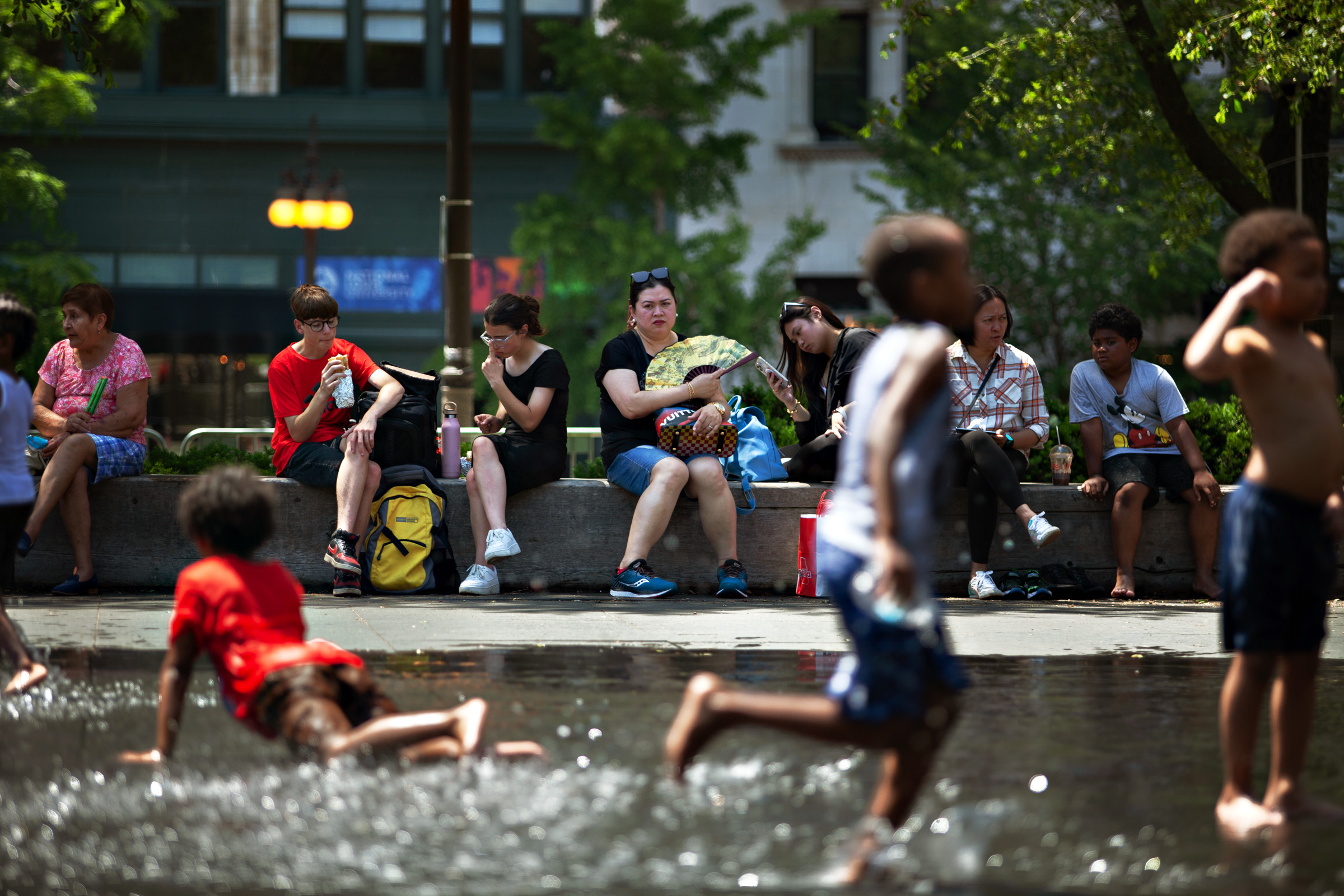
People sit in the shade while children play with water in the center of Chicago on June 14, 2022.
Vincent de Johnson/Xinhua via Newscom
Stay wet
Drink additional fluids, and do not wait until thirsty.
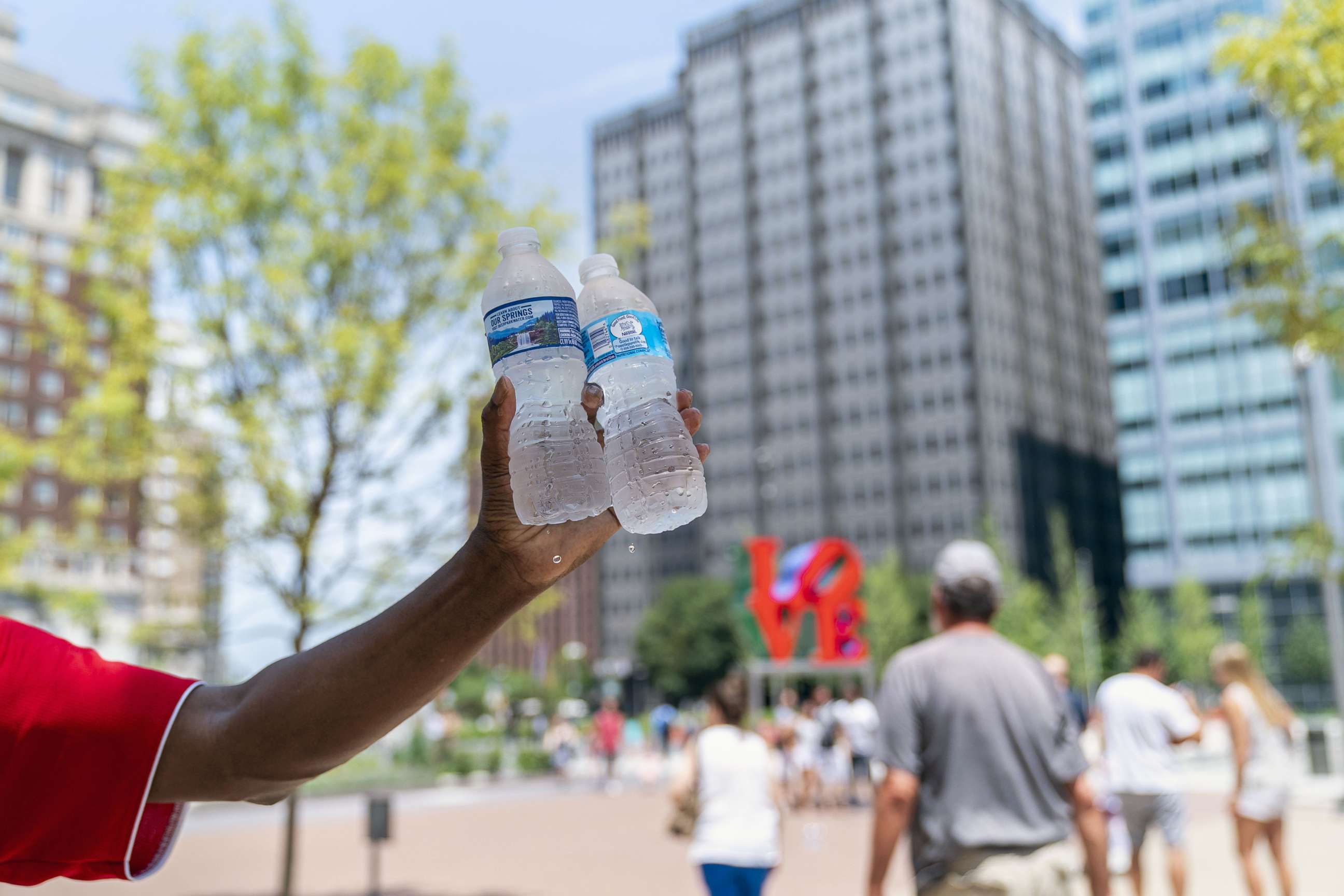
A man sells bottles of water at Sweden heat on July 1, 2018 in Philadelphia.
Jessica Coronis/Getty Erch
Avoid sugary drinks and alcohol, which can cause your body to lose more flexible, and be careful of cold drinks that may cause stomach cramps.
Avoid hot and heavy meals can reduce your body’s total temperature.
Reducing time outside
Reducing the exercise during heat and comfort waves often and in shaded areas.
Try to limit your time outside when it is cooler, as in the early and evening.
Check the car
Never leave children in a parked car – even if the windows are open.
Monitor high risk lovers
Anyone can suffer from heat -related disease at any time, but these people are at greater risk:
Children and young children
Persons with weight gain
Those who are 65 years old or older
People who go beyond work during work or exercise
Those who suffer from heart disease or high blood pressure and those who take certain medications, including depression, insomnia or bad blood circulation
Monitor
The symptoms of the heat blow include:
Body temperature is 103 degrees or higher
Hot, red, dry or wet skin
Fast pulse, strong
— headache
Dizziness
— nausea
— confusion
Exit
– It is no longer sweating
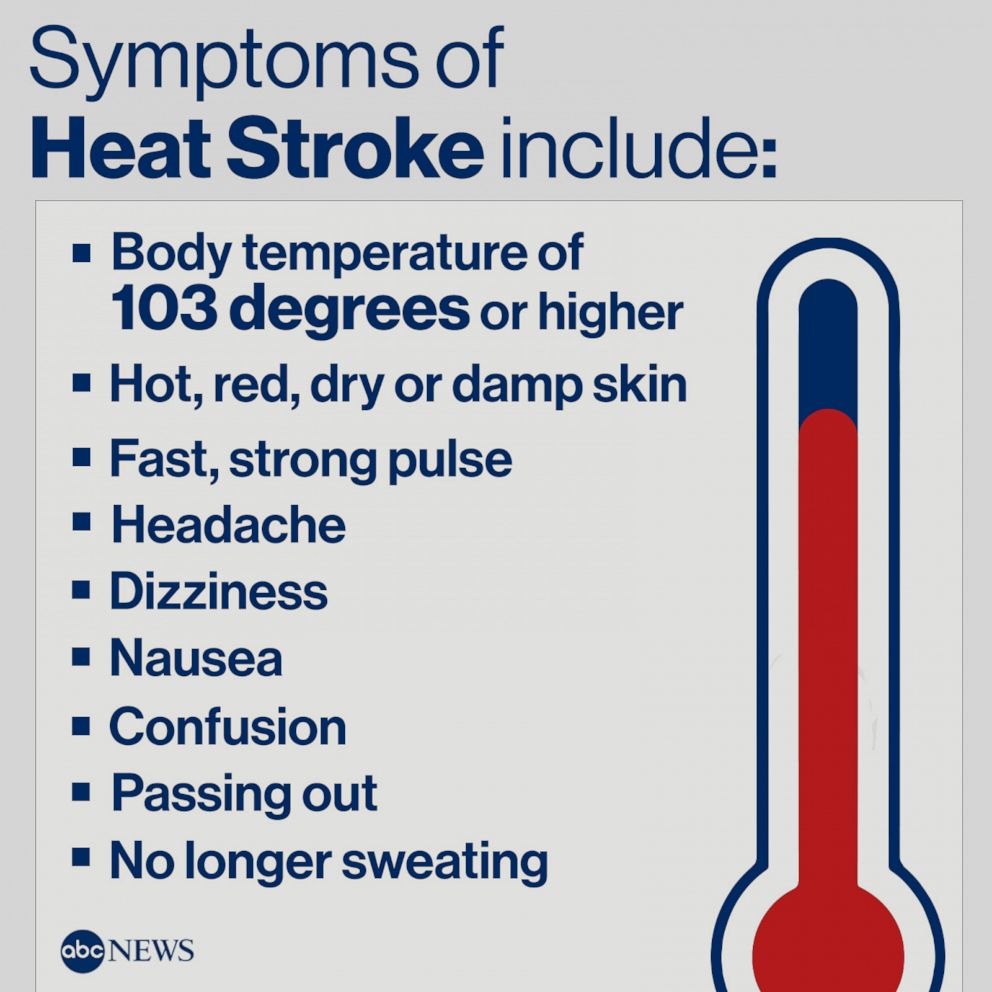
Symptoms of heat strokes
An explanatory drawing for ABC News
Symptoms of heat exhaust include:
Heavy sweating
– Cold, pale, leather clammy
Fast pulse and weakness
Nausea or vomiting
Muscle spasms
Feeling tired or weak
— headache
Exit
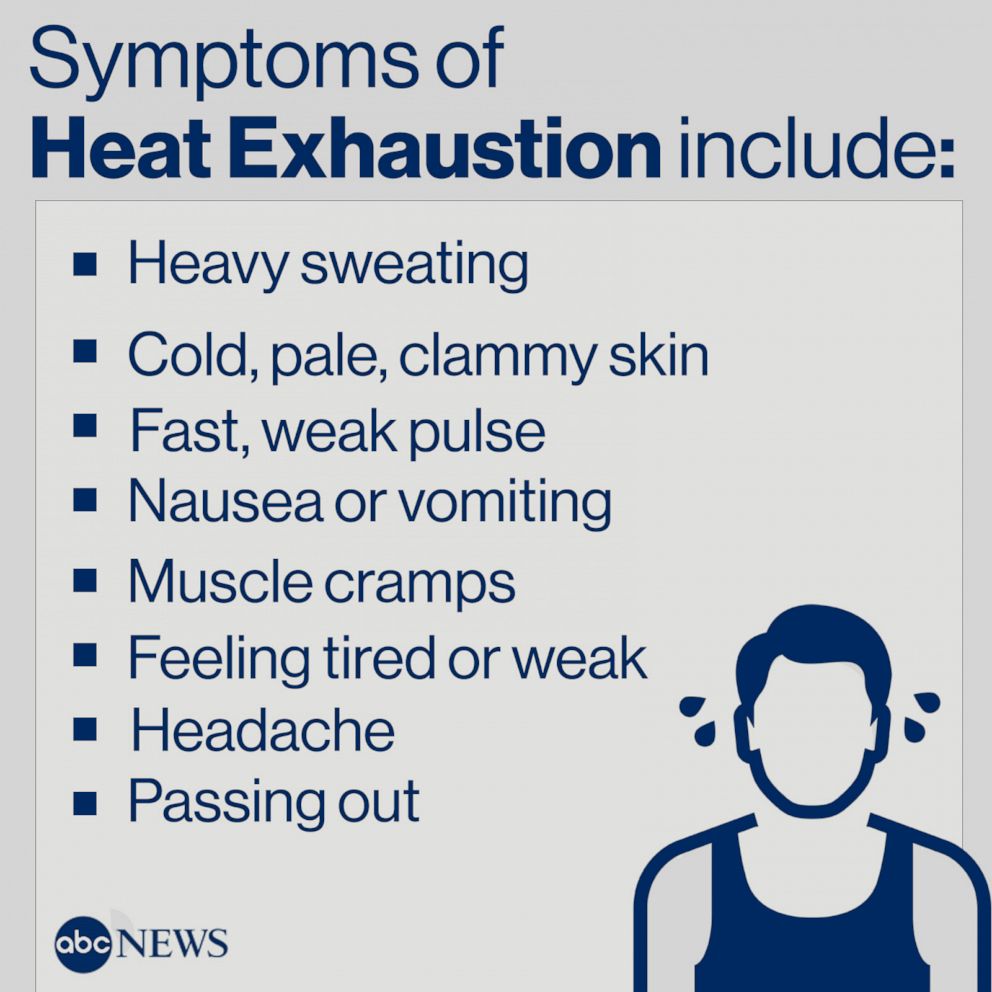
Symptoms of heat exhaustion
ABC News
If someone shows symptoms of stroke or heat exhaustion, call 911, then move it in a cooler place and use towels to calm their bodies.
Don’t forget your friends Froy!
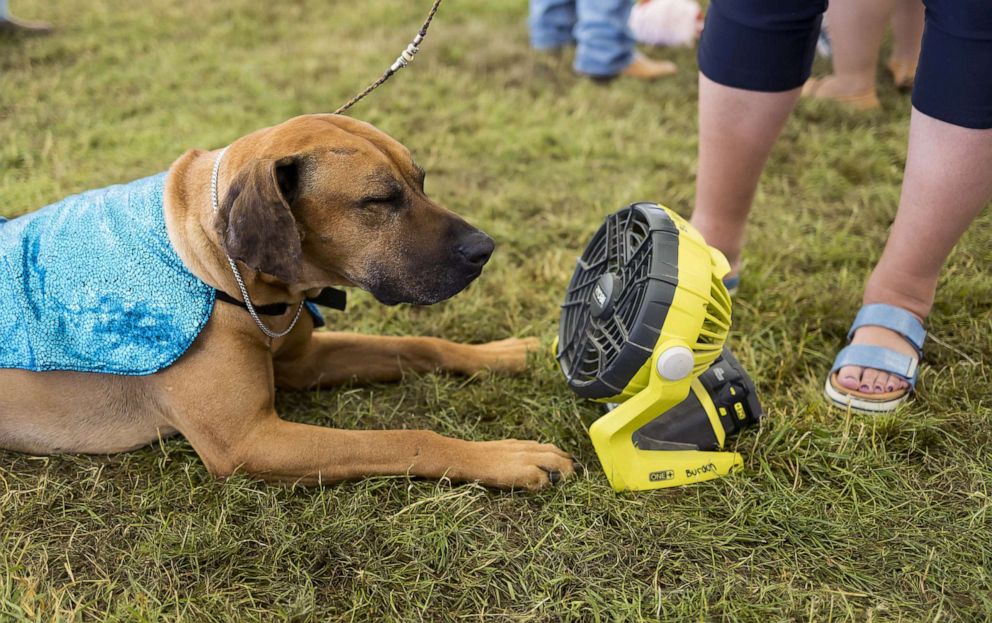
Ridesian RidgeBack, named Aiden, cools with a fan of the 146th Westminster Kennel Club, in Tarrytown, New York, June 20, 2022.
Justin Lane/EPA via Shutterstock
Here are some advice from the American Association to prevent cruelty to animals for how to maintain the safe pets in the heat: Providing a lot of fresh water so that they are not dried; Do not overuse the pet exercise. Do not leave the pets alone in a parked car; And watch the symptoms of high temperature, which include excessive joy, difficulty breathing, increased heart and breathing rate.
Flat -faced animals, such as clay, cannot also be affected and more vulnerable to stroke. These pets, as well as old pets and weight gain, should remain as much as possible.
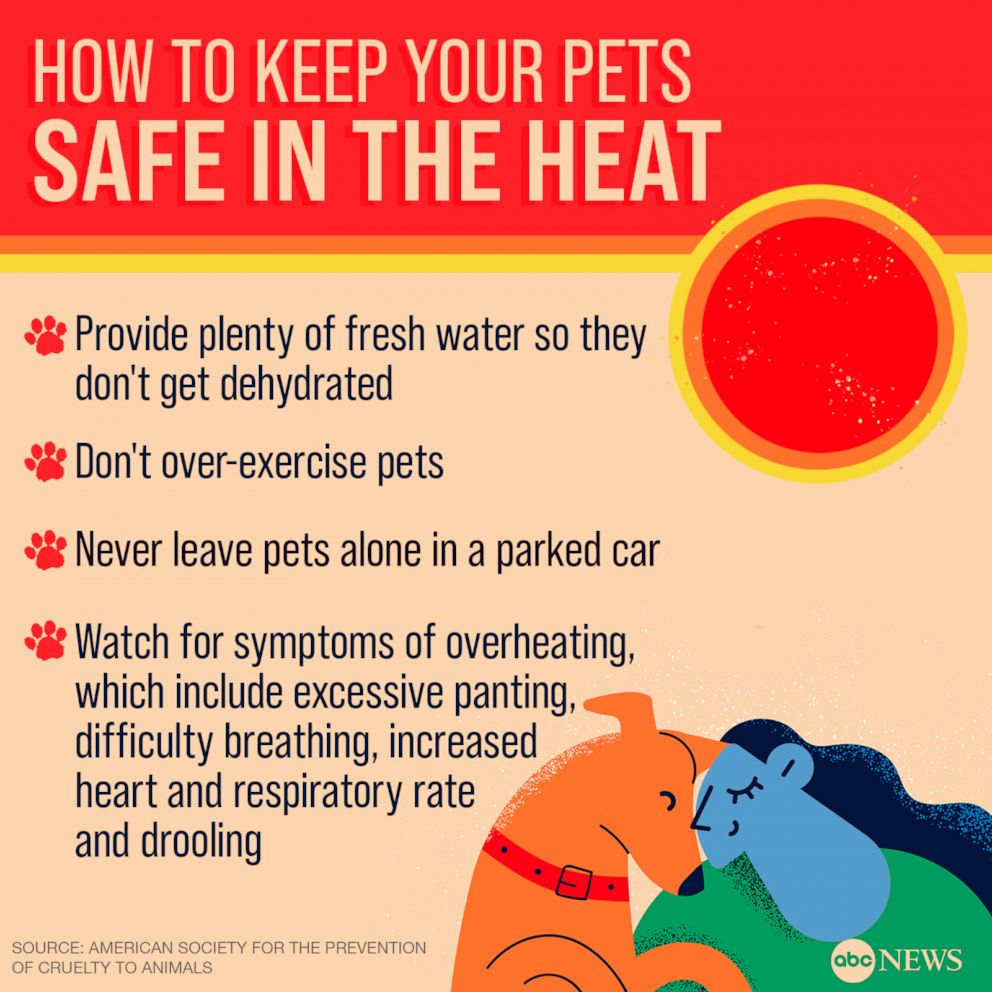
Tips to keep your pets safe in heat.
An explanatory drawing for ABC News
What constitutes a thermal wave?
The heat wave is an unnatural period of hot weather, and generally lasts for two days, according to L. National weather service.
However, the definition of the heat wave varies by area.
In the Middle West and the northeast, the heat wave is three days or more, respectively, of temperatures of no less than 90 degrees. But in Phoenix, for example, temperatures are much higher than 90 degrees and in triple numbers without being a heat wave. So the heat wave is related to the average local temperature and may require much higher temperatures than usual for several days, according to NWS.
ABC News’ Kyle Reiman contributed to this report.